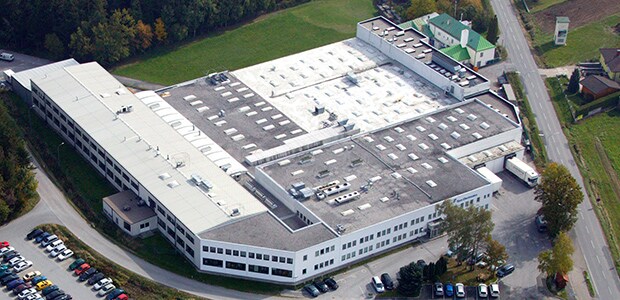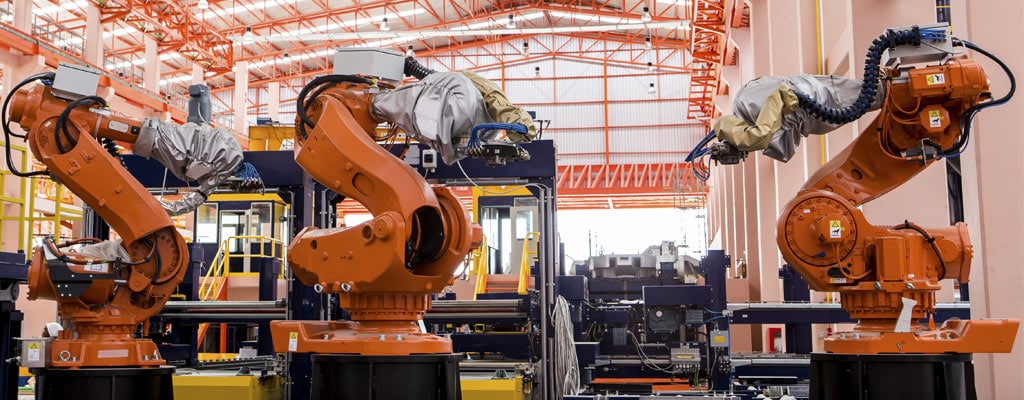Author
Mark Maas, Digital Factory Leader, Industrial
Industrial companies are facing a number of key challenges. Among these is the need to achieve more flexible manufacturing while at the same time ensuring that production becomes increasingly more efficient. Data collection, aggregation, visualization and analytics that enable immediate data-driven decisions can help to overcome these challenges. Data driven decisions in turn lead to greater efficiencies in energy and raw materials use, people and money, higher quality and also greater flexibilty. A number of key industrial initiatives such as Industry 4.0 and Industrial Internet of Things (IIoT) are setting out to address the industrial challenges. While the exact future of the IIoT is not yet certain, it is clear that change is an ongoing process and the factory of the future will be the result of evolution. As a manufacturing company, TE prides itself on its outstanding customer service. Our own manufacturing facilities provide an environment in which we can share increasingly more information, both within the plant as well as within the entire value chain. And what’s more, because we own the factories, feedback is fast.
DRIVING DIGITALIZATION
The aim of the digital factory is to significantly increase productivity through systems that form part of Industry 4.0 – the Industrial Internet of Things (IIoT) for example – by connecting machines and making better use of process data.
As a global provider of connectivity solutions, TE Connectivity has more than 100 production locations worldwide. In a drive to digitalize these locations, the company launched an initiative in 2014 called the “Digital Factory”. Experts from various sectors were brought together at a Center of Excellence to define five levels of maturity that a digital factory should achieve over time in the listed below applications.
Application Areas
- Basic functions
- Quality
- Track and trace
- Order management
- Tool management
- Predictive analysis
These application areas, or modules, were in turn subdivided to create a total of 15 aspects that included, for instance, an MES platform (manufacturing execution system), SPC (statistical process control) and material flow. How this is achieved in practice can be seen at the TE Connectivity plant in Waidhofen in Austria.
TE WAIDHOFEN: LEADING THE WAY
For the digital factory pilot, TE looked for a factory that manufactured large quantities of products. With its primary manufacturing of relays and cables-to-cable connectors for lighting in the building automation segment, Waidhofen was selected. The core production processes in Waidhofen include fully automated assembly, plastic injection molding, punching and electroplating. In addition to electronics manufacturing, the Waidhofen site also houses a Center of Excellence for development of electromechanical power relays the associated production facilities – another reason why the plant, with its long tradition in automation and process engineering, was chosen for the pilot project. Manufacturing of relays is 100 percent automated with up to 60 different processes running in one production line, with cycle times of just 0.3 seconds in some cases.
GAINING VALUABLE DATA WITH END-TO-END MACHINE CONNECTIVITY
MACHINE CONNECTIVITY
An initial step involved bringing the aspects of machine connectivity, user interfaces as well as alarm message and response (from the basic functions module) to a capability level of between 1 and 3. This was completed by the end of 2017 and resulted in a significant increase in productivity, quality and overall equipment effectiveness (OEE).
Machine connectivity is the basis for digitalizing the factory. Before data can be analyzed in IT systems, it first has to be recorded and communicated. At the Waidhofen plant, 90 percent of all machines are already connected to the factory network. Programmable logic controllers (PLCs) and test equipment in the production lines record and transmit process- and product-related information to the network. This data is then collected by higher-level systems so that it can be visualized and analyzed. To enable the data to be evaluated taking a variety of aspects into account, the MES platform has already had new software modules added to it, which have also been modified in part in cooperation with the manufacturer.
To connect the remaining 10 percent of the Waidhofen plant machines (whose controllers have no Ethernet port), the intention is to use TE’s in-house solution, Spark. This is a type of gateway that can convert any PLC protocol into Ethernet protocols such as Profinet, Ethernet/IP or EtherCAT. This will allow all machines at the Waidhofen plant to support the functions at capability level 1 to 3 – which in turn will mean that both status information (L1) and
error and alarm messages (L2) can be transmitted, as well as valuable process data such as sensor values (L3) for vibration, pressure and speed.
DIGITAL COMMUNICATION SIMPLIFIES LOGISTICS AND MAINTENANCE
SIMPLIFIES LOGISTICS AND MAINTENANCE
Once all machines are connected, two further aspects of the basic functions module – alarm messages and response – can be implemented. This will enable, for example, the use of existing data terminals on the machines to ensure materials are dispatched faster from the warehouse to the production area (and vice versa) on the basis of digital transport orders. Apart from faster response times, the primary aim is to reduce the space requirement in the warehouse and on the line.
Another important aspect of alarm messages and response
is the ability to reach maintenance specialists, not only by telephone, but also automatically via push messages. An example of such a message could be words like “Machine 1 has stopped, this has top priority,” together with information on the type of error, so that the maintenance engineer can prepare accordingly – by bringing the correct spare parts for example. The response time and downtime are thus reduced and productivity increased.
SMART TOOL MANAGEMENT AND INLINE MONITORING
TOOL MANAGEMENT AND INLINE MONITORING
In addition to the basic functions of a digital factory, additional modules or capability levels have already been tackled at the Waidhofen plant as part of the digital factory initiative. Such modules include tool management using RFID for track and trace applications; this allows tool availability to be improved in conjunction with digital maintenance plans. Software tools that allow order management to be performed automatically are also to be used increasingly – a TE plant in Mexico is a good example of where this has already been implemented. Relevant planning time was cut from an average of four days to under and hour as a result.
TE’s experience so far shows that gradually digitalizing the factory quickly leads to measurable success, which can be seen not only in more efficient processes and higher plant availability, but also in terms of quality. When personnel on the production lines know the status of production, this information can also be made available for the so-called inline monitoring. As a result, not only the number of items produced but above all their quality can be monitored – not just at the end of the line, but already during the process. Support is provided in this context by processes such as SPC, which can be used to establish if specifications are being observed or if deviations exist – with direct intervention without incurring additional costs owing to missing parts.
TE IS ON TRACK FOR THE FUTURE
TE began digitalizing its own factories more than three years ago, defining six fields of application (modules) and five capability levels for this purpose. 2016 was the starting point for the Industrial Business Unit at the Waidhofen plant in Lower Austria, which has been gaining vast experience in plant engineering and machine connectivity since the 1990s and is already using the Spark gateway developed by TE. The next step involves adding further modules and achieving higher capability levels in the different fields, which will probably take until 2020 – at which point it will be time to shuffle the deck once again.
The Factory of the Future will not suddenly launch. Instead it will evolve as the result of ongoing practical studies and developments. It is here that companies such as TE have the experience, the expertise and the willingness to invest today in solutions for tomorrow. And because we own the factories, we have the handson experience to be able to think in solutions – and the innovation power to create these solutions.
About the Author
More Content by TE Connectivity























